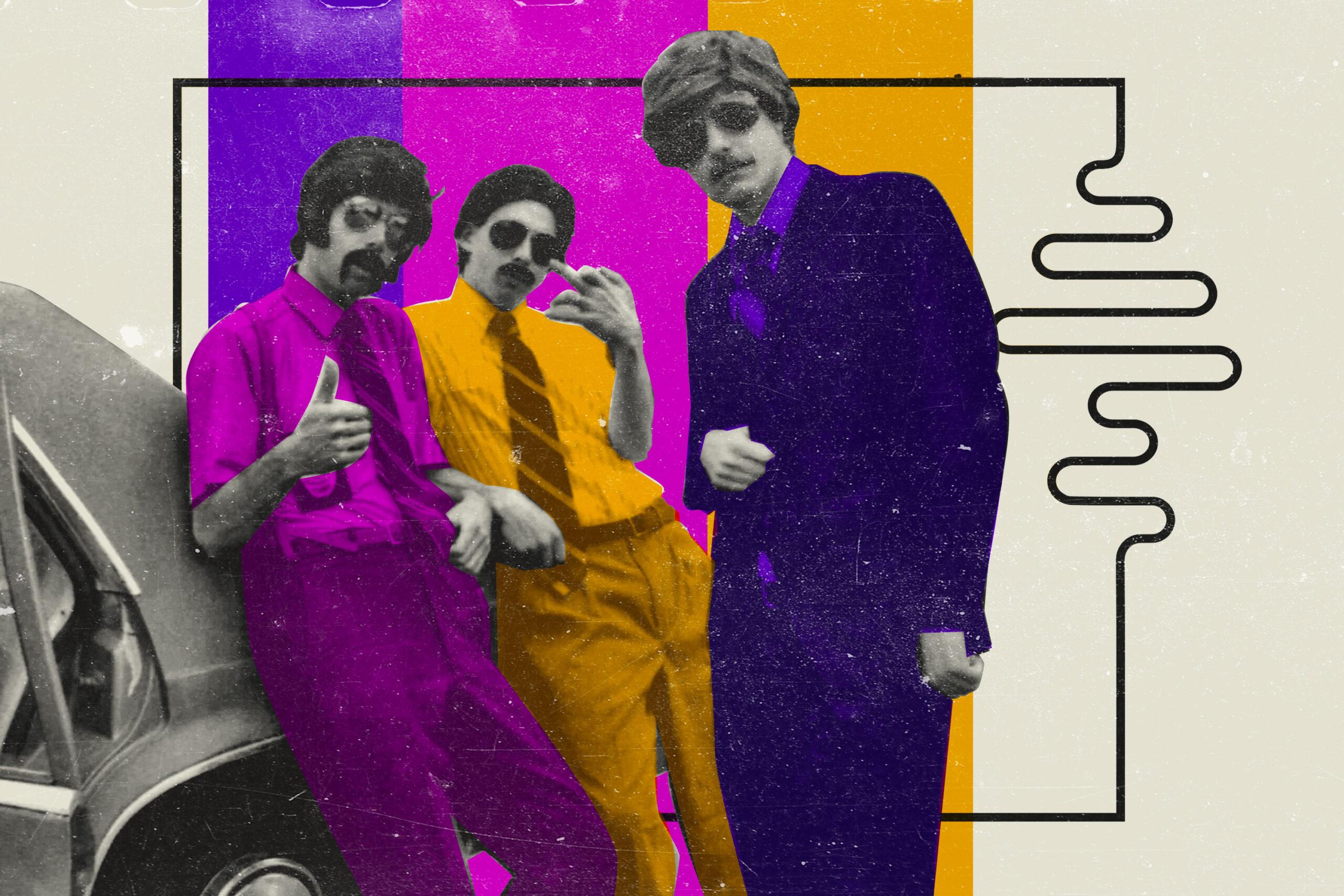
Grunge. Wu-Tang Clan. Radiohead. “Wonderwall.” The music of the ’90s was as exciting as it was diverse. But what does it say about the era—and why does it still matter? 60 Songs That Explain the ’90s is back for 30 more episodes to try to answer those questions. Join Ringer music writer and ’90s survivor Rob Harvilla as he treks through the soundtrack of his youth, one song (and embarrassing anecdote) at a time. Follow and listen for free on Spotify. In Episode 71 of 60 Songs That Explain the ’90s—yep, you read that right—we’re breaking down the Beastie Boys biggest song of the decade, “Sabotage.”
Let’s compress an enormous amount of timeline information heading in both directions, past and future, from this moment. The Beastie Boys formed as teenagers in New York City in the early ’80s. This is Bizarrely Romanticized Barbarian Wasteland–era New York City. You’ve seen the movies. Escape from New York, The Warriors, still some Taxi Driver, The Muppets Take Manhattan, not that last one, but you get it. That New York City. Originally there’s also other people in the band and they’re called something else and they’re a hardcore band. Inspired by Bad Brains, the Misfits, and what have you. Character development ensues. The first even remotely successful Beastie Boys song, from 1983, is called “Cooky Puss” and consists mostly of Ad-Rock prank-calling a secretary for Carvel, the ice cream company. “Cooky Puss” has no particular redeeming cultural value and playing it for you would be willfully obnoxious. Right? Right.
Yeah, so, on drums here you got Kate Schellenbach, who’s not gonna be around for much longer, because the Beastie Boys also meet Rick Rubin. At the time, NYU student and rap-music obsessive Rick Rubin, future megaproducer and rock-star-whisperer and hirsute horizontal guru Rick Rubin. (He lies down a lot in the studio. It’s very amusing to me.) Rick Rubin and fellow budding rap mogul Russell Simmons—whose brother, Joseph Simmons, is of course in Run-DMC, whom Russell is managing, and whom the Beastie Boys of course idolize—Rick Rubin and Russell Simmons have formed Def Jam Recordings. The Beastie Boys sign to Def Jam, and at Rick Rubin’s behest they refashion themselves as charismatic-asshole frat-rappers, and they kick their dear friend Kate Schellenbach out of the band, so now it’s just MCA, Ad-Rock, and Mike D, and their debut album Licensed to Ill comes out in 1986 and just absolutely blows the fuck up. First rap album to top the Billboard album chart, eventually 10 million copies sold in the United States alone, it goes Diamond, the Beastie Boys are the first rap group on the cover of Spin magazine, et cetera. Look out, here comes “Brass Monkey.”
Somewhere in there the Beastie Boys open some shows for Madonna and shout obscenities at Madonna’s audience of largely preteen girls; somewhere in there the Beastie Boys headline their own tour with a goofy and boorish stage-prop situation that includes a 20-foot-tall inflatable penis, that, uh, unfurls, uh, climatically, during the song “(You Gotta) Fight for Your Right (to Party!)” If you’ve ever listened to this show before you might be amazed that I did not lead with the 20-foot-tall inflatable penis, and to you I say that I have written multiple articles about the Beastie Boys over the years and at least one of those leads with the 20-foot-tall inflatable penis. Specifically I clarify that it was in fact not inflatable but a hydraulic 20-foot penis. Do not ask me to articulate the difference between inflatable and hydraulic, with regards to 20-foot penises, because I will simply stall for time while repeating the phrase 20-foot penis as many times as possible.
Next: Remarkable character development ensues. Their character development, not mine, clearly. Remarkable. For the next two decades and change, the Beastie Boys put out eight albums total, or closer to 15, depending on how you count compilations and EPs and so forth, and they are beloved elder statesmen as rappers, and as rockers, and, yes, as statesmen, headlining massive festivals and what have you, right up to the moment when Adam Yauch is diagnosed with cancer in 2009. They never play another show. Adam Yauch dies of cancer in 2012. He was 47. He was, and will remain, a rock star. He became a rock star the moment he looped the drums on Led Zeppelin’s “When the Levee Breaks” on a reel-to-reel tape machine—with the tape itself wrapped around two mic stands and a chair—for the first song on Licensed to Ill, called “Rhymin & Stealin.”
And then the Beastie Boys burn out, and get sick of partying and sick of the party-dudes they’re partying with, and they get sing of playing the song “(You Gotta) Fight for Your Right (to Party!),” and so they stop playing that song, and break with Rick Rubin and Russell Simmons and Def Jam, and they put the 20-foot hydraulic penis in storage in New Jersey (where it apparently remains to this day), and in phases the Boys move out to L.A, and hook up with a production crew called the Dust Brothers, and start working on their second album. And now, when you picture the Beastie Boys discography, the Beastie Boys timeline, you are encouraged to confine all those not-clever-enough stupid-asshole antics to the Licensed to Ill album and the Licensed to Ill era. It’s a sort of permanent discography quarantine, right?
Can I say one more thing about the 20-foot-penis? I’m sorry. Years and years ago I was reading like an oral history or something about that Beastie Boys tour, I forget where—Rolling Stone or SPIN, probably. I’m not looking it up. And somebody on that tour, I don’t know if it was an opening act or a crew member or what, described a prank they pulled, where they got little crabs and stuck them onto the 20-foot penis, so that onstage when it unfurled, it looked like there were crabs on it. And what I remember specifically, what this dude says, I took the liberty of retaining this phrase, he says, We adhesed the crabs to the phallus without anybody’s knowledge. That’s what I remember, or how I chose to remember it: We adhesed the crabs to the phallus without anybody’s knowledge. That mellifluous phrase is part of my brain’s permanent record.
I keep talking about this to hopefully make clear to you that I am not assuming a position of moral superiority, here. This is not one of those deals where Enlightened Mature 2022 Guy impresses you with his maturity by denouncing the unlightened antics of Immature 1986 Guys. I am super immature and I am legitimately fascinated by the last five years or so of Beastie Boys brand management. I don’t mean that ugly, or cynically, or critically. I am fascinated by how hard Ad-Rock and Mike D are working, how earnest and penitent and tender and charismatic they’ve been in talking about their past, and apologizing for the uglier aspects of their past. They don’t want their legacy to be “Fight for Your Right.” Everything about us is “Fight for Your Right.” We’re the “Fight for your Right” guys. We could shoot ourselves in the head for writing that song. They are making absolutely sure that “Fight for Your Right” and Licensed to Ill does not define them.
That doesn’t make Licensed to Ill radioactive or unlistenable now and it never did. In college, in the late ’90s, I took a public speaking class. That was the whole class, we just gave speeches to each other, I don’t know man, it was a state school. A lot of Greeks, a lot of fraternity and sorority action in that class, as I recall. They were all pretty cool. During my speeches I would drum on the podium incessantly, due to anxiousness, in effect drowning out my words, which was for the best. But so this dude gave a speech that was just “Paul Revere.” A dramatic reading of the Licensed to Ill song “Paul Revere.” It was fantastic. Everyone loved it.
That’s from the actual song, that’s not from the dude’s speech, I didn’t tape his speech, I’m sorry. Because I didn’t tape his speech, I cannot 100 percent swear to you that he didn’t say the line about the whiffle ball bat, in “Paul Revere,” but I’m like 99 percent sure he didn’t say the thing about the whiffle ball bat. OK? The surviving Beastie Boys, now, spend a lot of time talking about Licensed to Ill, and it’s not that they want you to forget their first record, but they want to make very clear that they like every subsequent record they made way more. They like all their other records more, and all their other records are more them. And that starts, of course, with their second album, Paul’s Boutique, from 1989, produced by the Dust Brothers, there’s like 20,000 ridiculous and sublime samples on this thing, permit me to be the eight billionth white guy in your life who’s raved to you about how fantastic Paul’s Boutique is.
Paul’s Boutique: pretty great record. That’s my opinion. I’m not afraid to say it. I’m swimming against the current here. I’m an iconoclast. Everyone loves Paul’s Boutique now. Nobody bought Paul’s Boutique in 1989. That’s another focus of the recent Beastie Boys book and movie. Ad-Rock and Mike D would like you to know that the Beastie Boys fuckin’ loved Paul’s Boutique, and were so psyched for this record to come out and wipe the floor with Licensed to Ill, and it flopped. Nobody bought it. Nobody bought into the group’s reinvention. Their partial reinvention. It would be a disservice to say that the Beastie Boys cut out all traces of boorish frat-party talk on Paul’s Boutique. “I took her to the place / I threw the mattress in her face.” Et cetera. Again, I don’t bring that up for purposes of moral superiority. I just mean that their evolution, their slow enlightenment, was a process. Fits and starts. A spectrum. The gradual dawn of a higher consciousness. I would argue that it’s all the more striking and endearing, that evolution, for how long it really took.
To hear the full episode click here, and be sure to follow on Spotify and check back every Wednesday for new episodes on the most important songs of the decade. This excerpt has been lightly edited for clarity and length.

